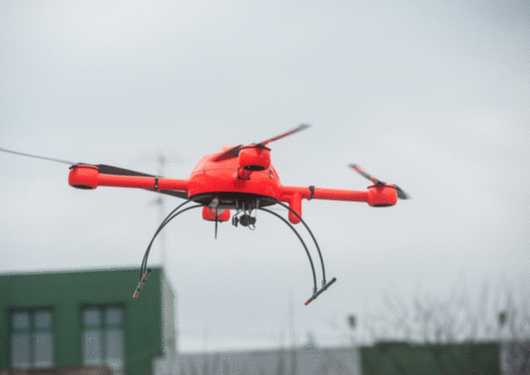
We’ve been promised a very near future in which drones are a regular sight overhead, zipping about and delivering packages to impatient online shoppers within a matter of hours. (Add in flying taxis, and the skyscape of tomorrow becomes even more intriguing.) But is that scenario really a practical one? Do drones make economic sense? Can they overcome barriers such as safe and secure access to homes and apartments, not to mention continuing uncertainties around regulatory treatment by the Federal Aviation Administration?
Tech giants such as Amazon.com and Google certainly think so, and are advancing rapidly in development of the technology. But the outfit that has been making the most progress in actual deployment of delivery drones is a smaller and more specialized player. The Israeli company Flytrex has been testing the drone delivery concept in Reykjavik, Iceland since last August, in partnership with AHA, the country’s largest e-commerce website.
As of late April, Flytrex had launched nearly 200 flights above Reykjavik, according to chief executive officer and co-founder Yariv Bash. More extensive testing was held up by winter. With the advent of spring, he expects to see expanded deployment of drones in Iceland, both in terms of number of delivery points and the mechanism for releasing packages.
Previously, the tests have required an operator at destination to physically remove the package from the drone, then give the craft an order to return to its original point. Now, the Flytrex drones will be able to hover 50 feet above the ground, and lower packages by way of a wire.
Bash says early results from the tests have been “quite positive.” Noise levels apparently haven’t been a concern, and “people are very happy with delivery times.” The Icelandic drones are routed over a large bay, bypassing a bridge that can become congested during heavy drive times.
The model of drone being used in the tests, the DJI-manufactured Matrice 600, has “performed as expected, flawlessly,” says Bash. Including initial tests, the unit has undertaken more than 1,000 flights in which it exceeded the operator’s line of sight. (That’s a limitation still imposed by FAA in the U.S.)
Flytrex plans to expand beyond Iceland in the coming months. It is awaiting final approval for deployment of drones in a major Central American city, and will also participate in pilot programs soon to begin in the U.S., overseen by FAA. Bash was expecting operators to be approved for the latter initiative in May.
All well and good – but do drones really make economic sense for individual deliveries in urban areas? What will it cost for a drone to deliver a single package, and will the seller be able to recover that expense through a fee charged to the buyer?
Bash sees drones as a solution to the increasing service expectations of consumers. Years ago, buyers who ordered from catalogs or through the mail expected delivery to take days, if not weeks. That’s not the case anymore.
“It’s all about the user experience, and what we get accustomed to,” says Bash. “Today, it’s about instant gratification.” For that, consumers are theoretically willing to pay a fee that’s commensurate with the speed of the service.
Still to be worked out are issues of safety and potential congestion in the skies, once drones become a regular feature of the “last-mile” fulfillment stream. Areas near airports are, and will continue to be, off-limits for drones being used for any purpose. The increased presence of drones could also trigger concerns over privacy. Bash notes that FAA is working with NASA and private operators to develop an air traffic management system that’s intended to prevent congestion and ensure public safety.
As to where drones might efficiently drop packages, Flytrex is aiming first at suburbs, where population density is lower, and the use of human couriers more expensive. In such cases, packages could be lowered directly into buyers’ backyards.
Cities are another matter entirely. In many instances, drones would have to deliver to apartment building rooftops, raising questions about security and package integrity. High-rise buildings could also serve as obstacles to the smooth operation of urban drones.
So when will delivery drone spotting become an everyday occurrence? Pilot projects will likely get underway in North America this year, Bash predicts, with widespread deployment occurring in 2019 or 2020.
It will take some time before operators can determine the most practical use of drones, in terms of location, time of day and type of merchandise. Clearly there will be many instances where a drone isn’t economically viable. But the technology should provide merchandisers with another option for meeting the increasing service demands of consumers. The multi-trillion-dollar retail and food-delivery industry is betting that a good portion of future last-mile deliveries will take place in the air.







